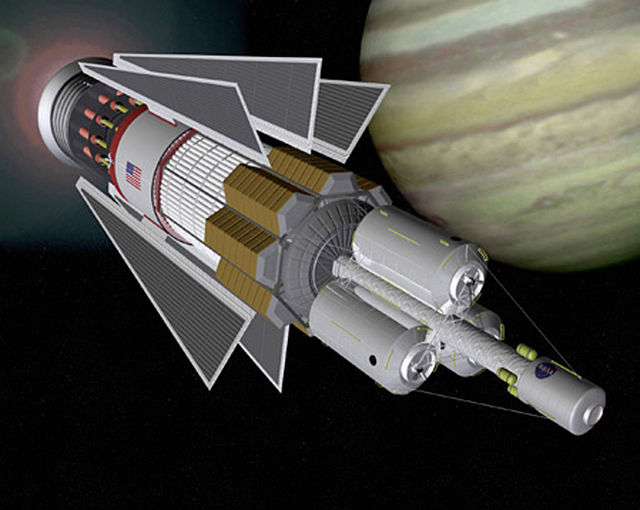Theodore Brewster "Ted" Taylor was an American theoretical physicist, specifically concerning nuclear energy. His higher education included a PhD from Cornell University in theoretical physics. His most noteworthy contributions to the field of nuclear weaponry were his small bomb developments at the Los Alamos Laboratory in New Mexico. Although not widely known to the general public, Taylor is credited with numerous landmarks in fission nuclear weaponry development, including having designed and developed the smallest, most powerful, and most efficient fission weapons ever tested by the US. Though not considered a brilliant physicist from a calculative viewpoint, his vision and creativity allowed him to thrive in the field. The later part of Taylor's career was focused on nuclear energy instead of weaponry, and included his work on Project Orion, nuclear reactor developments, and anti-nuclear proliferation.
Taylor in 1965
Project Orion (nuclear propulsion)
Project Orion was a study conducted in the 1950s and 1960s by the United States Air Force, DARPA, and NASA into the viability of a nuclear pulse spaceship that would be directly propelled by a series of atomic explosions behind the craft. Early versions of the vehicle were proposed to take off from the ground; later versions were presented for use only in space. The design effort took place at General Atomics in San Diego, and supporters included Wernher von Braun, who issued a white paper advocating the idea. Non-nuclear tests were conducted with models, but the project was eventually abandoned for several reasons, including the 1963 Partial Test Ban Treaty, which banned nuclear explosions in space, and concerns over nuclear fallout.
NASA artist rendering, from 1999, of the Project Orion pulsed nuclear fission spacecraft
Modern pulsed fission propulsion concept



